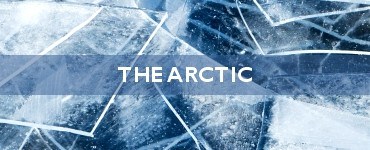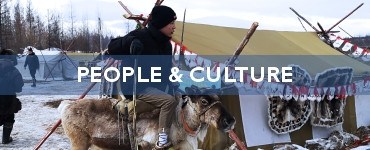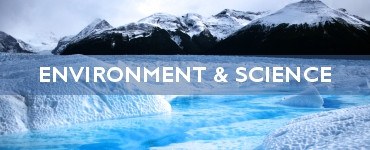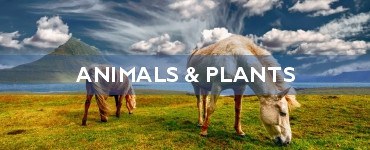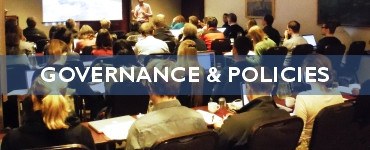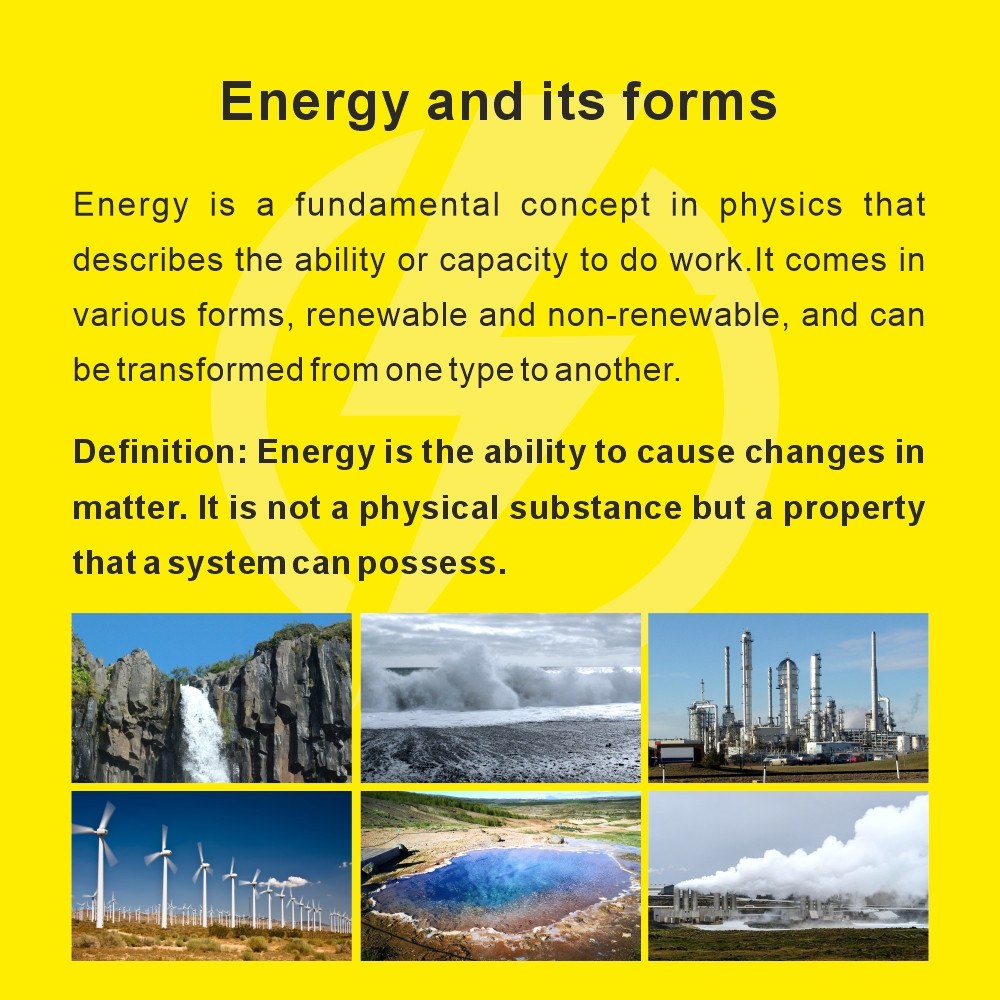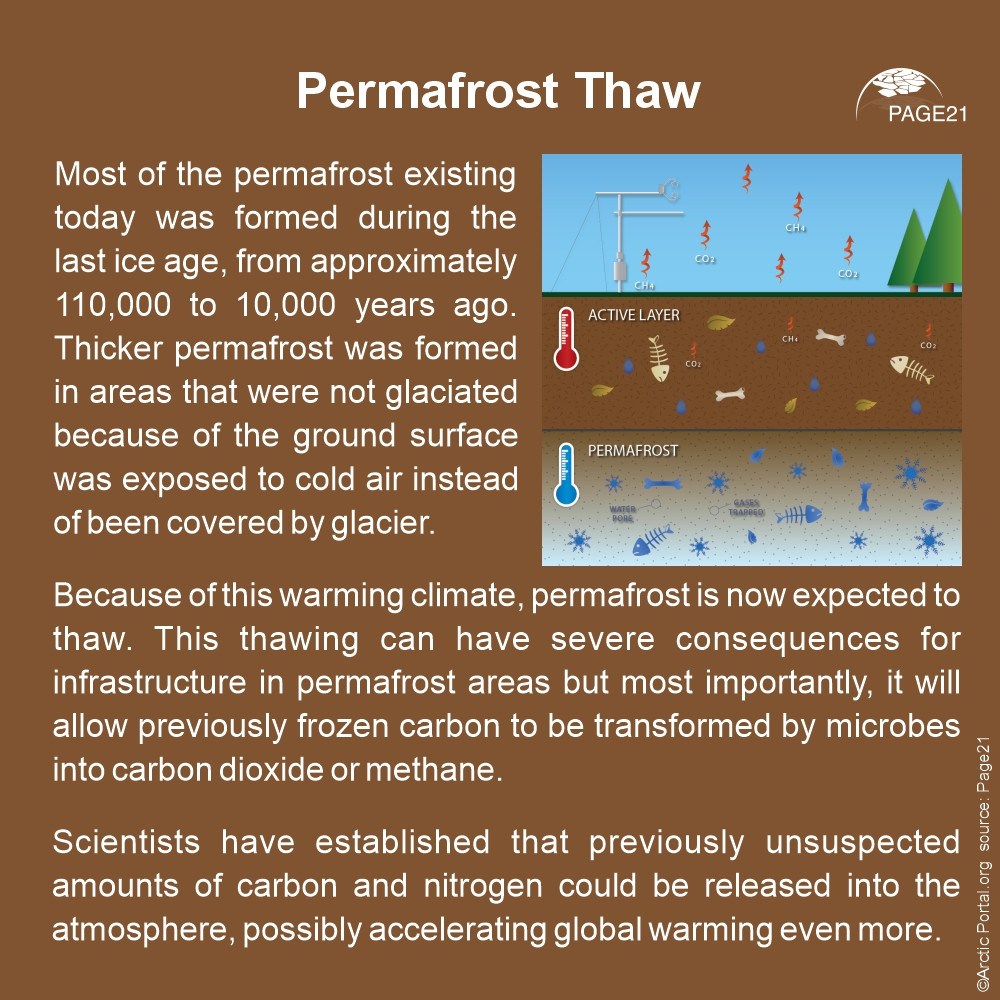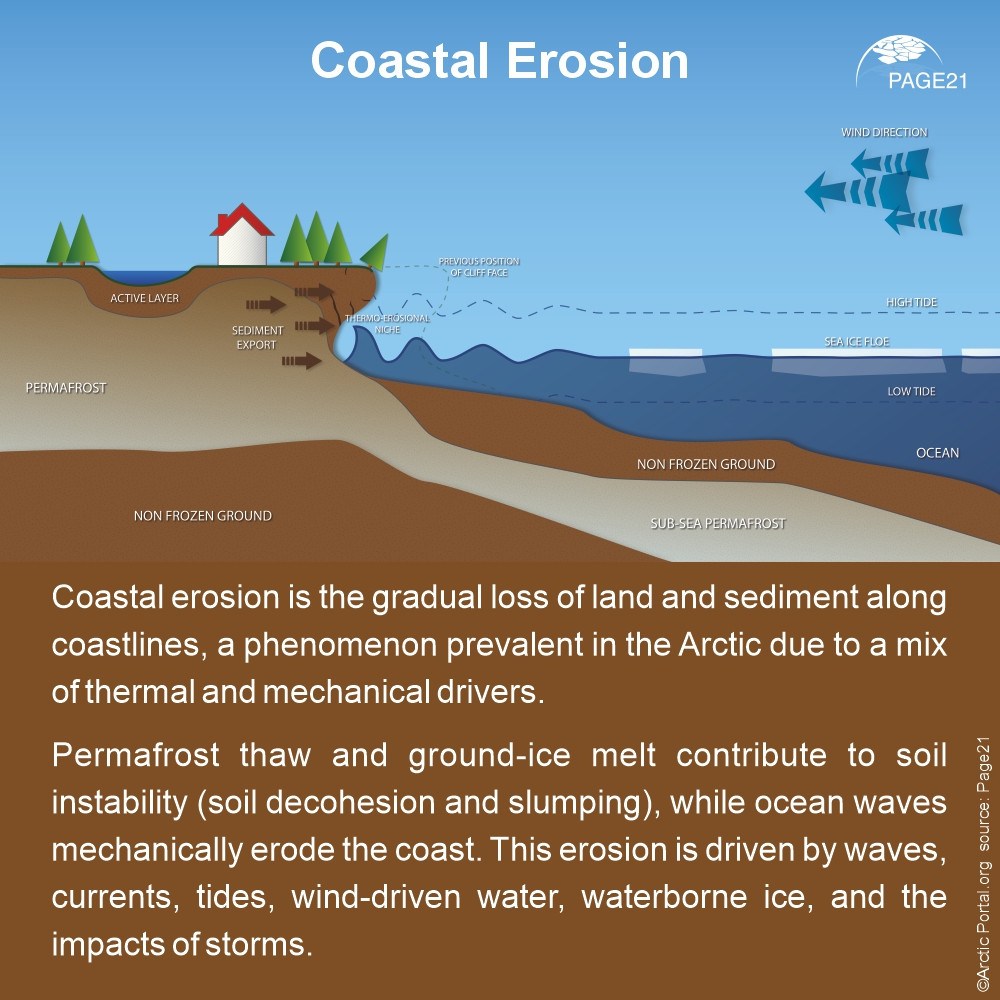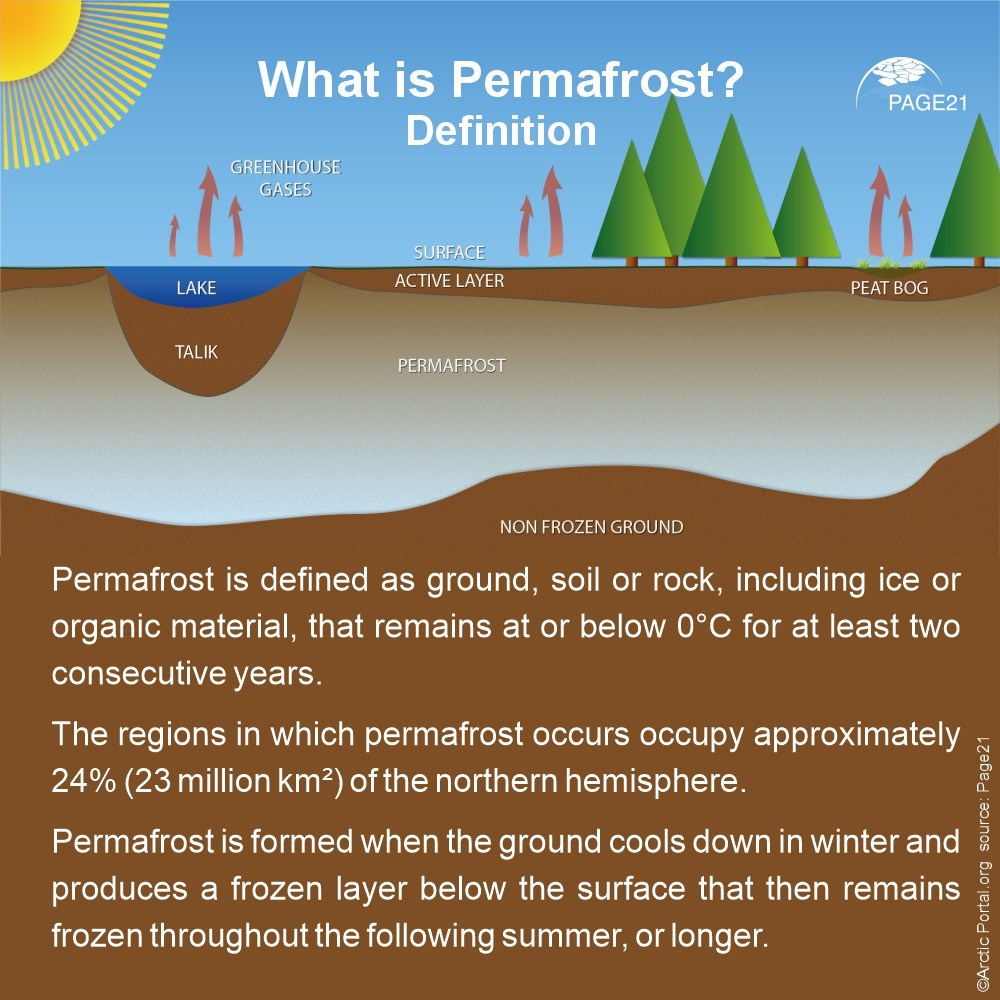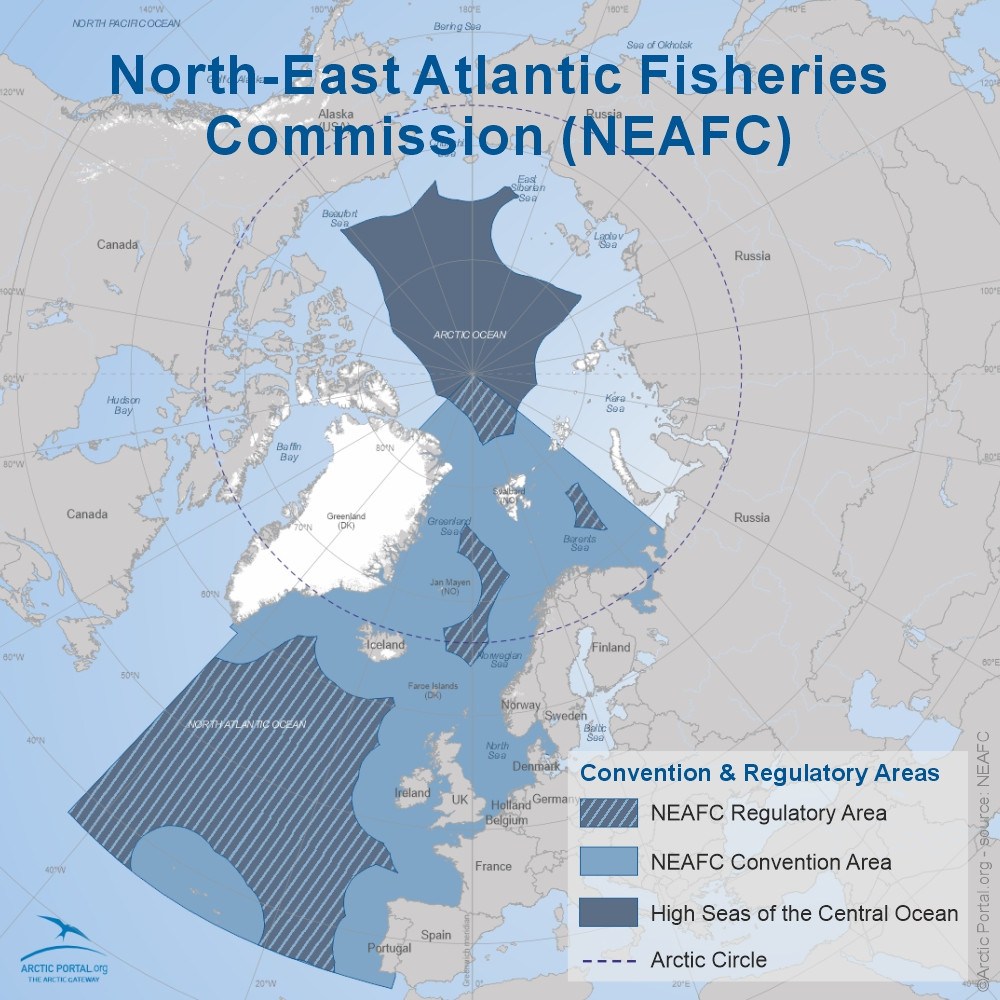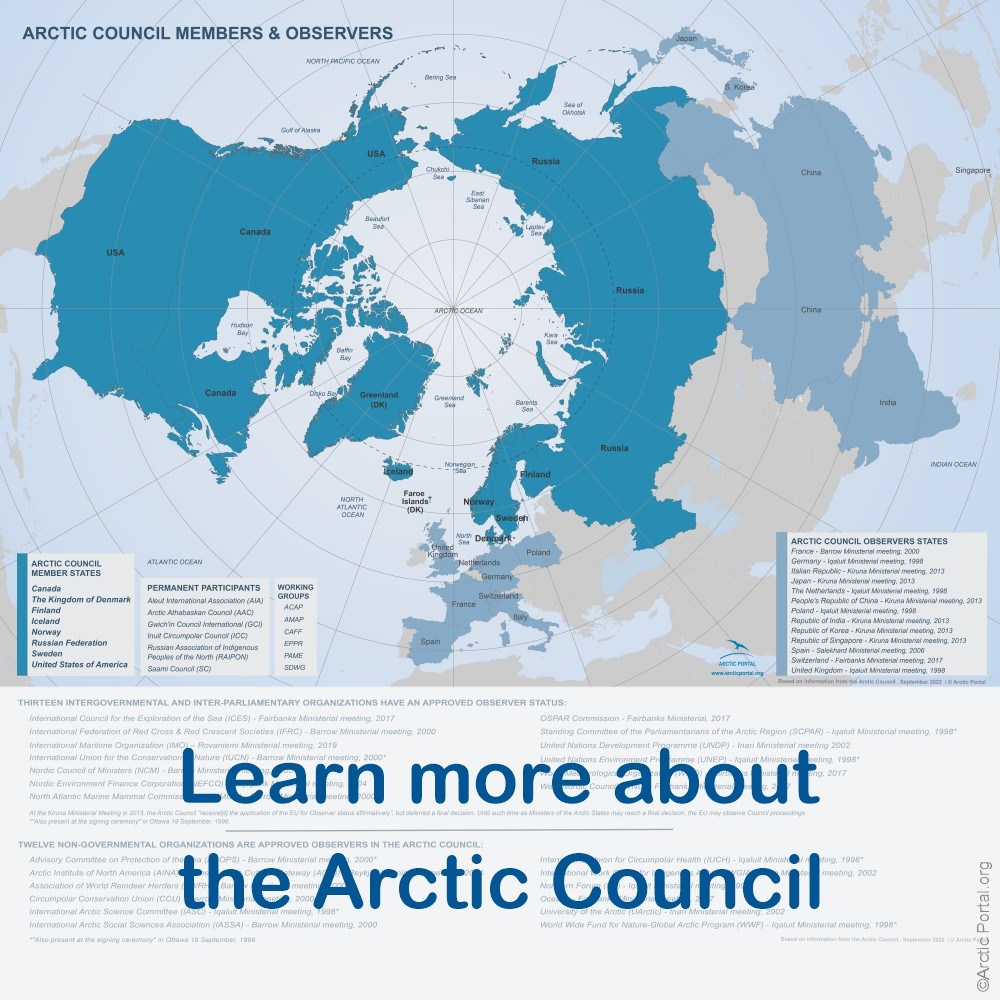Quick Facts
Quick facts give you valuable resources to learn quickly about different things of significance in the Arctic categorized in the following main categories
26 February 2024
Energy is a fundamental concept in physics that describes the ability or capacity to do work. It comes in various forms, renewable and non-renewable, and can be transformed from one type to another.
14 March 2024
Most of the permafrost existing today was formed during the last ice age, from approximately 110,000 to 10,000 years ago. Thicker permafrost was formed in areas that were not glaciated because of the ground surface was exposed to cold air instead of been covered by glacier.
14 March 2024
Coastal erosion is the gradual loss of land and sediment along coastlines, a phenomenon prevalent in the Arctic due to a mix of thermal and mechanical drivers.
14 March 2024
Permafrost is defined as ground, soil or rock, including ice or organic material, that remains at or below 0°C for at least two consecutive years.
26 January 2024
A database of metadata for finding and accessing systems and related organizations that coordinate or track observing activities & infrastructure in the polar regions.
8 March 2024
NATO was created by 12 countries from Europe and North America on 4th April 1949.
26 February 2024
The North East Atlantic Fisheries Commission (NEAFC) functions as the Regional Fisheries Management Organization (RFMO) overseeing the North East Atlantic which stands as one of the globe's richest fishing grounds.
22 February 2024
The Nordic countries, also known as the Nordic region, consists of Denmark, Finland, Iceland, Norway, and Sweden as well as the territories Faroes Islands, Greenland, Åland Islands, Svalbard and Jan Mayen.
24 January 2024
The first purely Arctic oriented meeting of the eight Arctic countries - Canada, Denmark, Finland, Iceland, Norway, Sweden, Russia and the U.S. - took place in Rovaniemi, Finland in September 1989. The topic of the meeting was the fragile Arctic environment and a potential for joint effort in tackling the very delicate but urgent issue.
Arctic Portal.org - 2024 © All rights reserved.
When quoting, reusing or copying any material on the arcticportal.org or any of its sub-sites including but not limiting to: information, news, articles, data, maps or images, in part or in full, a citation stating the origin and a hyperlink to www.arcticportal.org is required.

